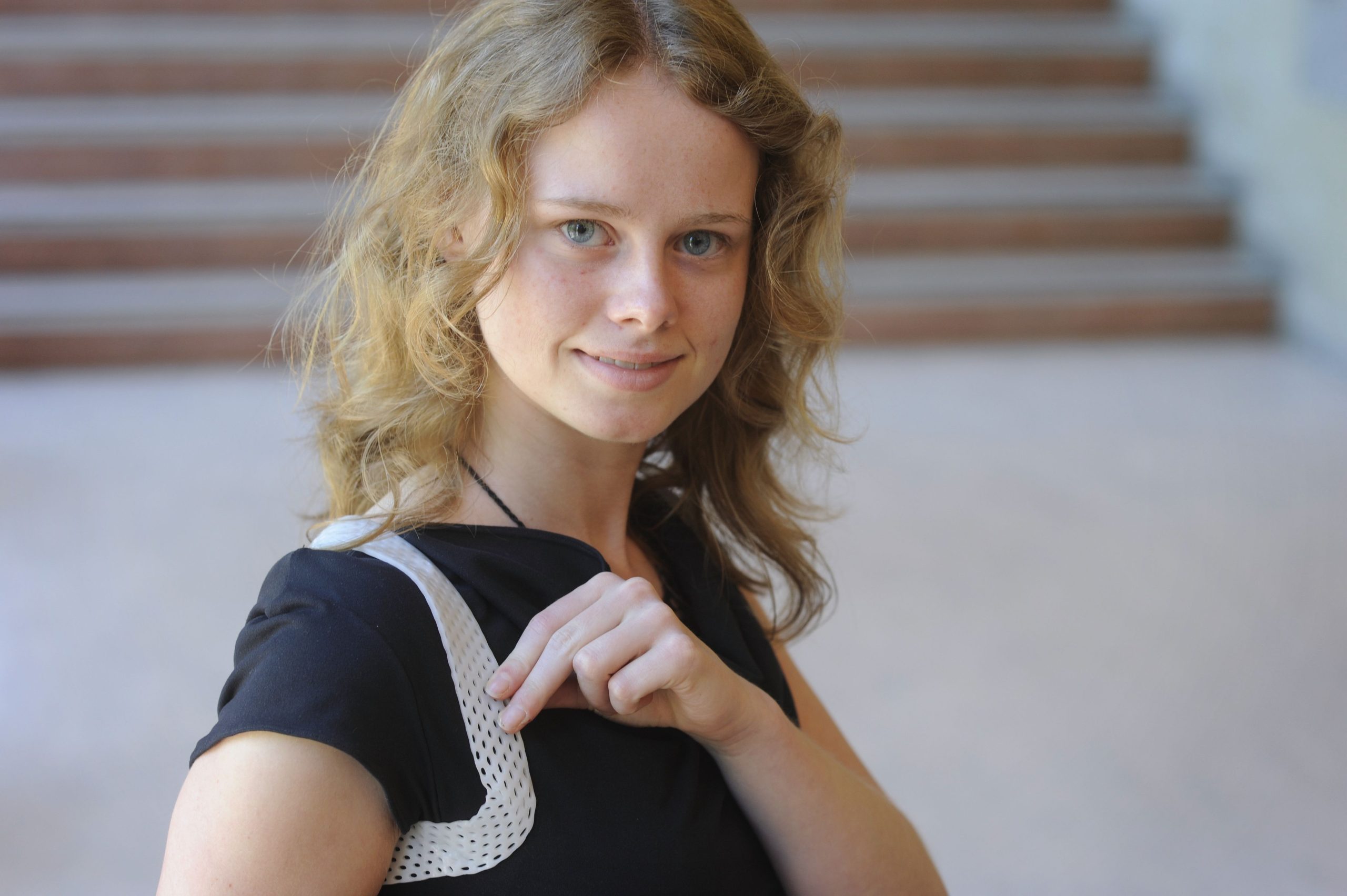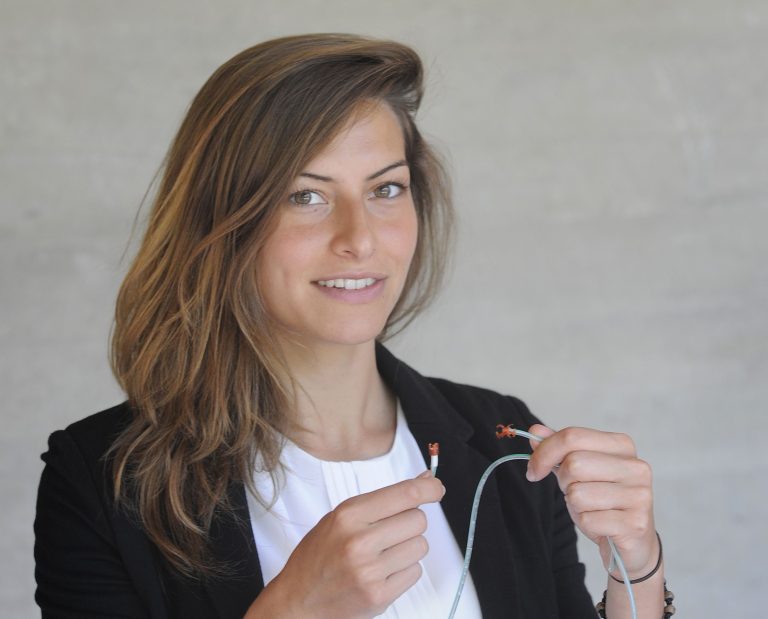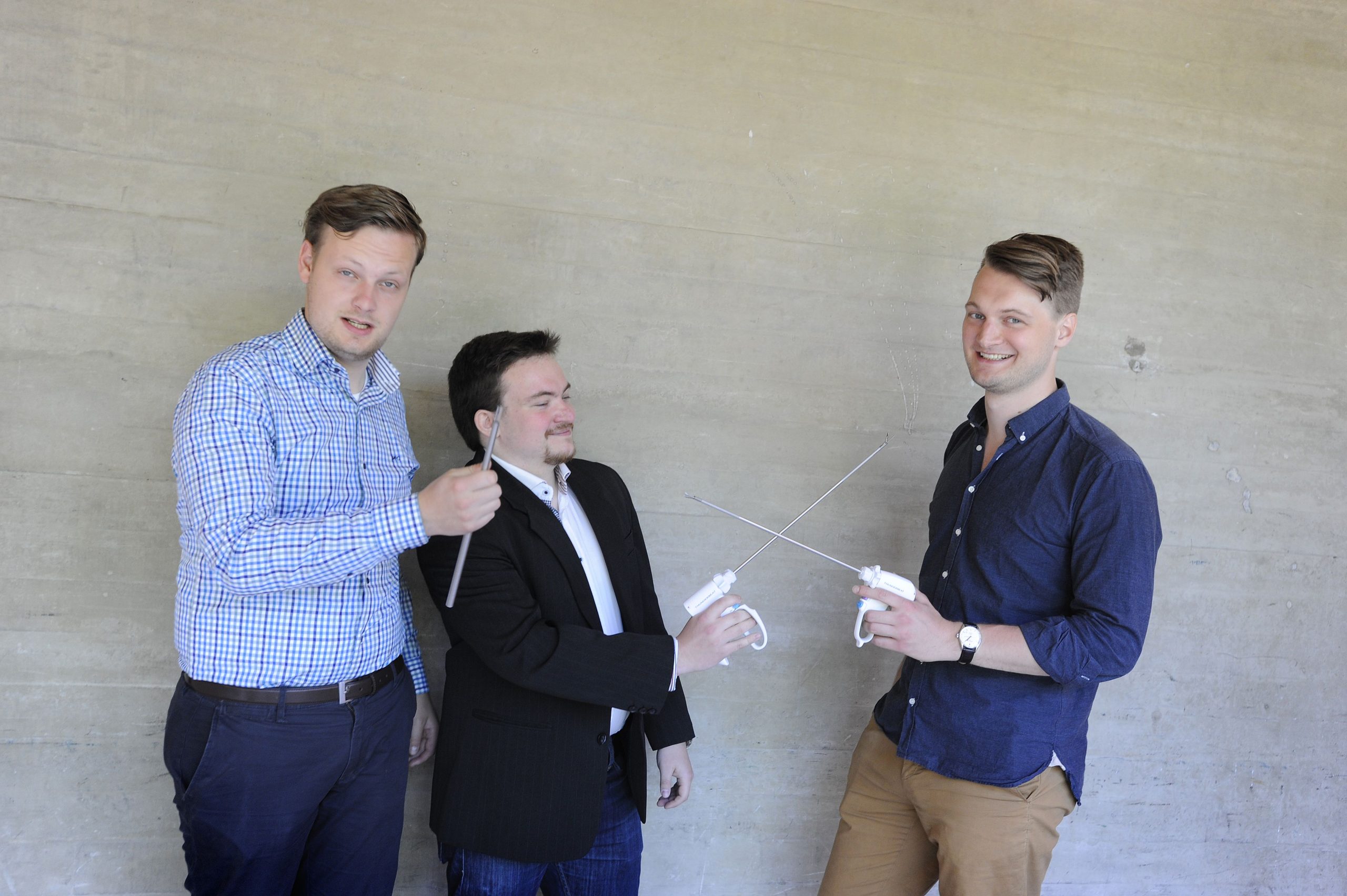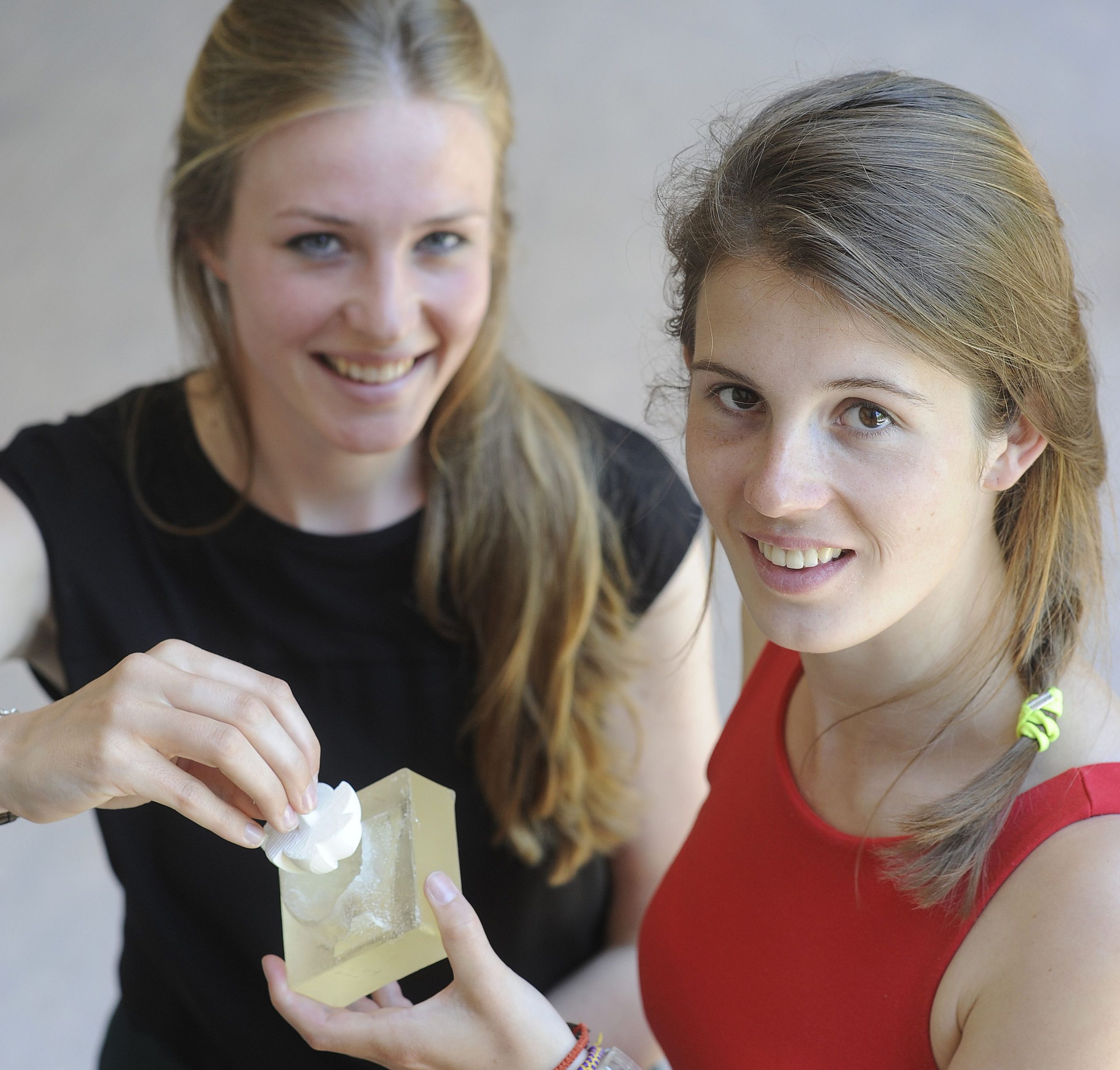Over the last six months, master’s students in biomechanical engineering have developed various biomedical prototypes. Their designs should alleviate occurring problems in medical practice. Students presented their prototypes during the MedTechWest event on June 11, 2015.


Tough glove
People usually cover their hand prostheses by special gloves. A glove makes the artificial hand less noticable as well as protecting the mechanics. But the silicon-based gloves are pretty vulnerable. Small punctures have a tendency to grow into big rips in very short time. So students Jay van den Berg and Kyrsten Oats set out to develop a sturdier alternative. Instead of one silicon layer, they opted for an elastic fabric covered with a harder version of silicone. They also developed a mold to make fingers for the glove. When assembled into a glove, the students expect their product to be more resistant to wear.


T-harness
Some prostheses need a body harness as a point of attachment. The trouble with these harnesses is that they are often uncomfortable to wear and they make one look like a patient. Students Fabrizion Verga, Jethro Low, Tessa Mol and Paulien Veldhoven have developed a more comfortable and less obtrusive alternate. The central fixed point is a thermoplastic ring, which gets soft at 80 Celsius, and can then be made to measure for the individual patient. A non-stretch fabric called Coutil, commonly used for corsets, keeps the ring in place around the shoulder. A small questionnaire showed that patients all agreed that the T-shape was both more comfortable and better looking than the current harnesses. The problem with marketing is the small market, said the students.


Tubeless
When infants need a feeding tube, it’s usually kept in place with a plaster on the cheek. A plaster is an awkward fix since the adhesive may cause skin irritation and wearing the tube can be socially embarrassing. Students have come up with a detachable join. The tube connector permits the inside part of the tube to stay in place (from the nasal cavity down to the stomach) while you can remove the outside part when not in use. After all, feeding usually takes less than ten minutes, so why walk around with a tube on your face? The students made their prototype as well as an enlarged demo version with a 3D printer. They are still working on the design and on material properties to make their prototype leak-proof and snappy clickable. The students involved are Maria Antico, Guillermo Jiménez Pérez, Karin Rodrigues Hernandez and Andrea Teatini.


Lung hands
Kevin Snaar and Sadra Bakhshandeh developed a modern alternative for a traditional tool that is used in thorax surgery to move the lungs aside and keep them there. The traditional tool is a T-shaped piece of aluminium that can easily bend into the right shape. A sterilised croon cloth covers the T-shape to prevent damage to the lung tissue. The trouble is that cotton fibres cling to the long tissue and stay behind after surgery. The students looked for a material that was bendable and biocompatible had shape memory. Specially heat-treated polyethylene seems to fit the profile pretty well. Holes in the tool’s base increase the grip. The students did tests with water-filled balloons as a stand-in for lungs, which seemed to work pretty well. At the end of the day, Lung Hands won the Medical Device Prototyping Award 2015.


Heat shield
A diathermic knife used in electrosurgery stays hot for over a minute after switching off. Especially in laparoscopic use, where the working area is very restricted, the still-hot tip of the tool can easily cause scorching and scarring of accidentally touched surrounding tissue. The Zubr (meaning bison in Polish) diminishes the risk of accidental burns by sliding a glass tube over the knife tip. An activated solenoid around the shaft of the tool pushes a slender bar magnet in and out, taking the glass cylinder along. The students propose to move the glass tube over the knife tip automatically as soon as the diathermic unit is switched off. Zubr was designed by Ivo van de Steeg, Yke Bauke Eisma and Maciej Kostatkowski.


Plastic powertool
When preparing the implantation of an artificial hip, a cup is made in the receiving hipbone. The orthopaedic surgeon has a drill for the job and a large set of steel reamers designed to enlarge the size of the existing cup-shape by a small amount. A group of students studied the possibility of using a biodegradable material as an alternative for steel for a disposable tool. The one from the 3D printer was not hard and sharp enough, so they went on with a fibre-reinforced composite material. More research is needed to come up with a biocompatible material that’s hard enough to cut into the hipbone and strong enough to make the cutting blades of the tool both leaner and sharper.
More info availbale on the MedTechWest website


Comments are closed.